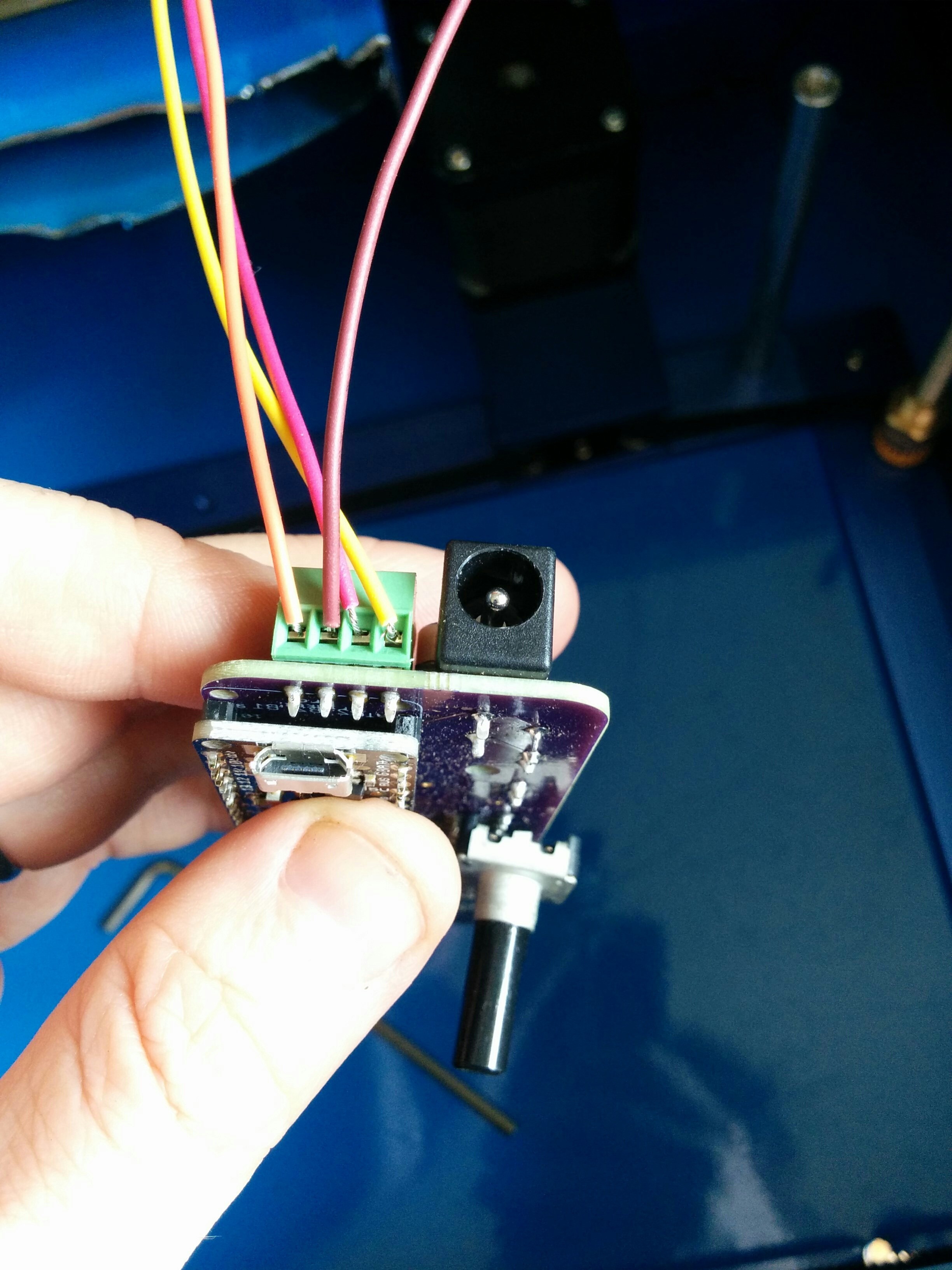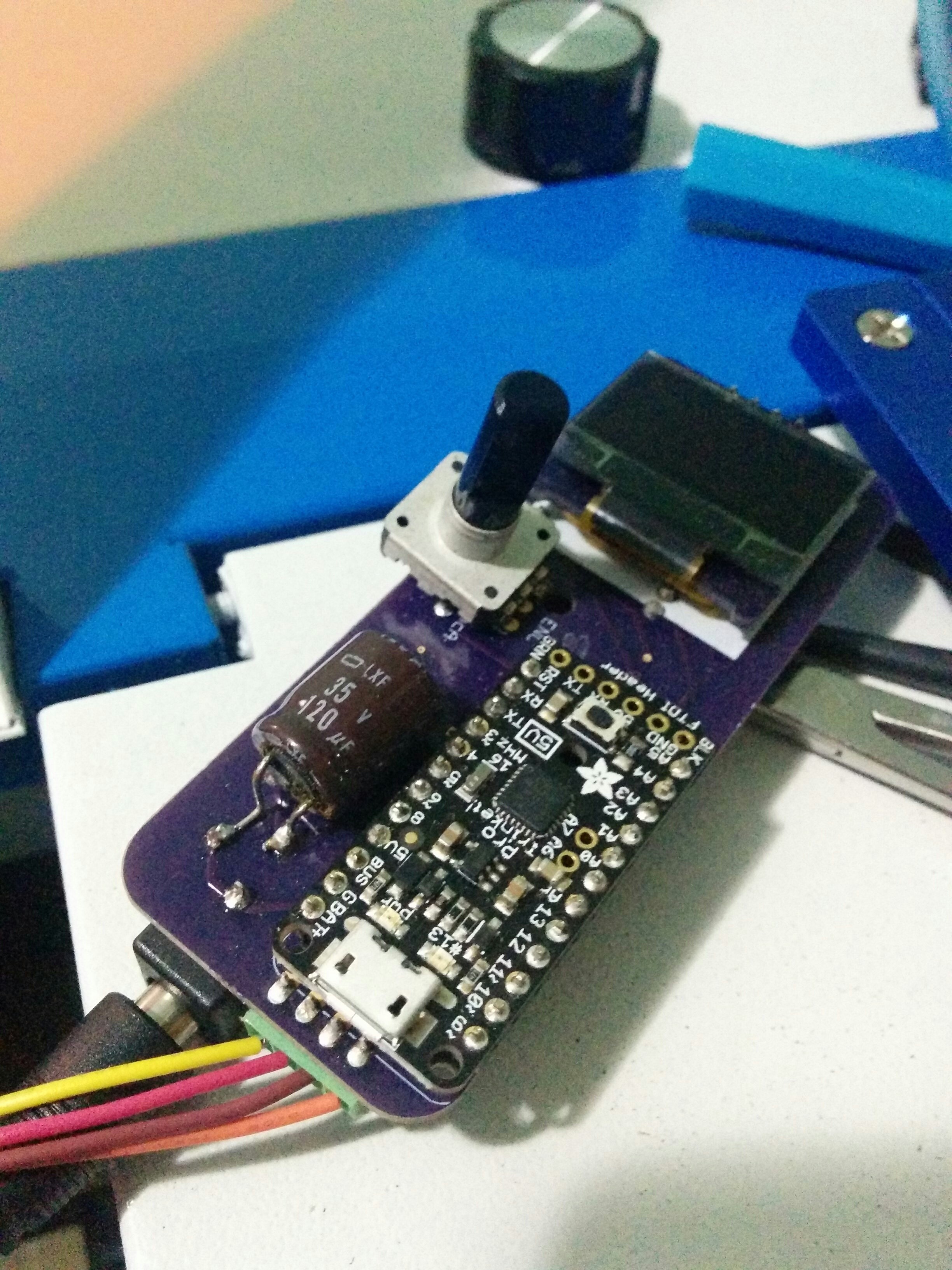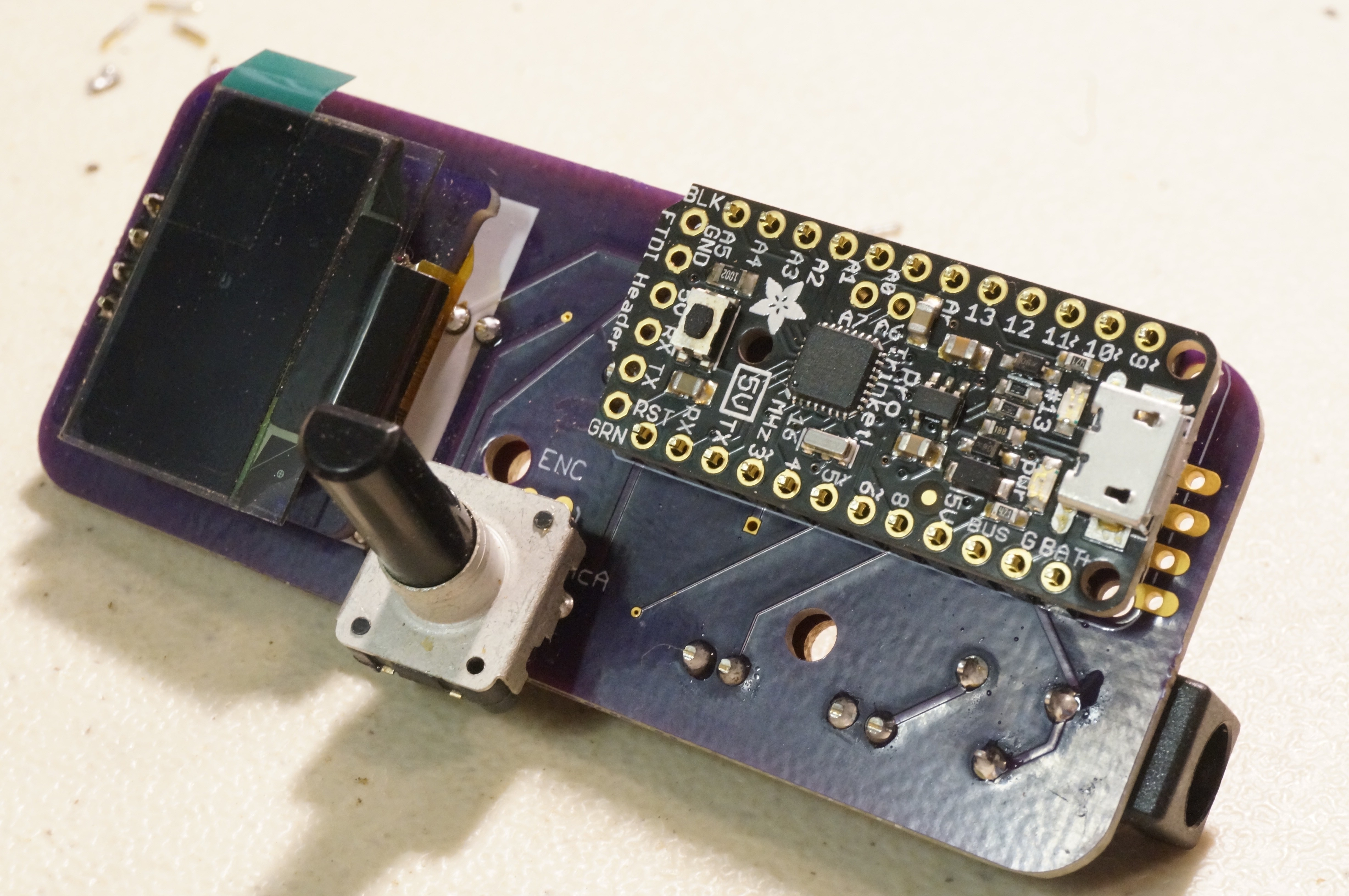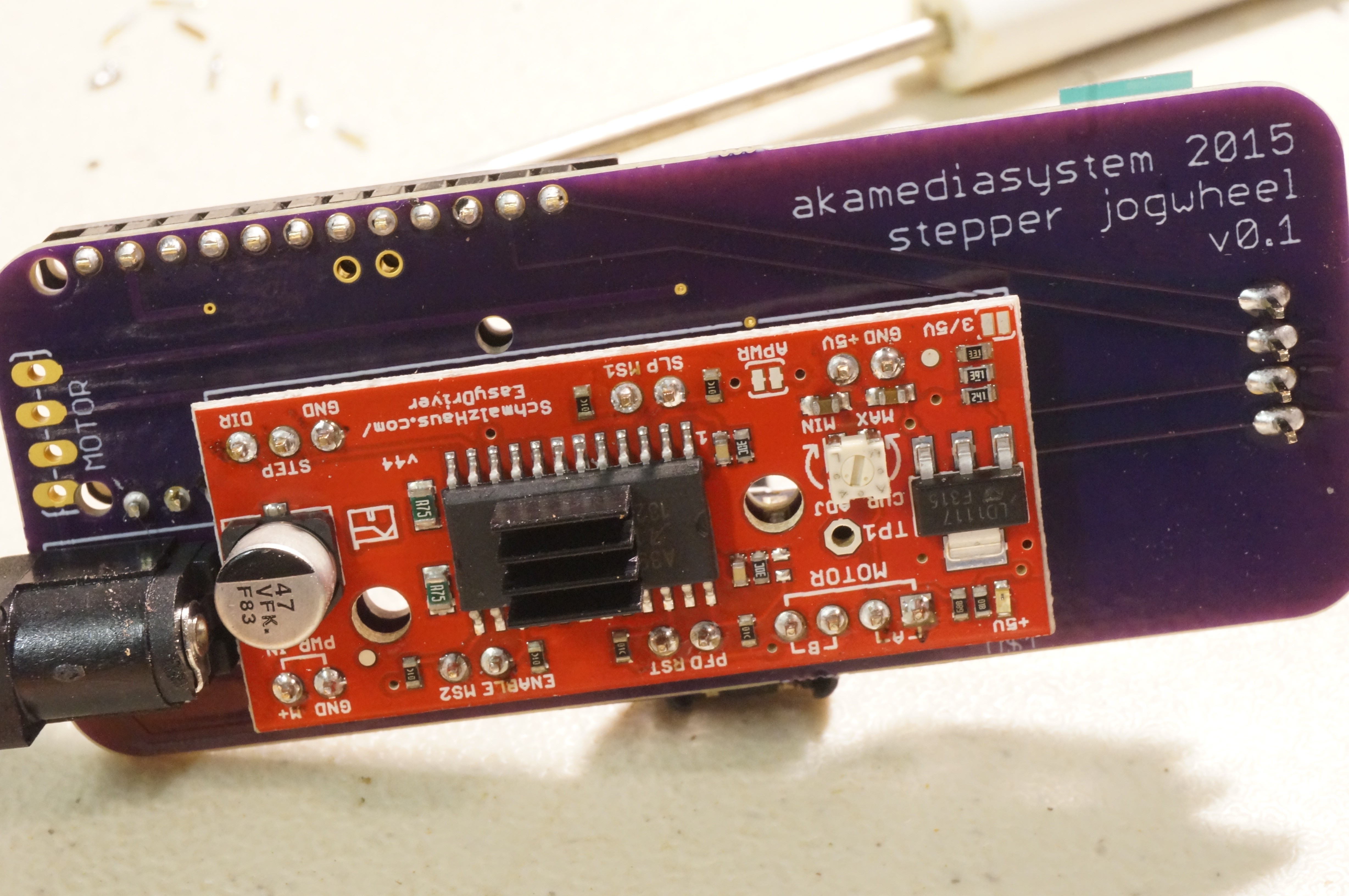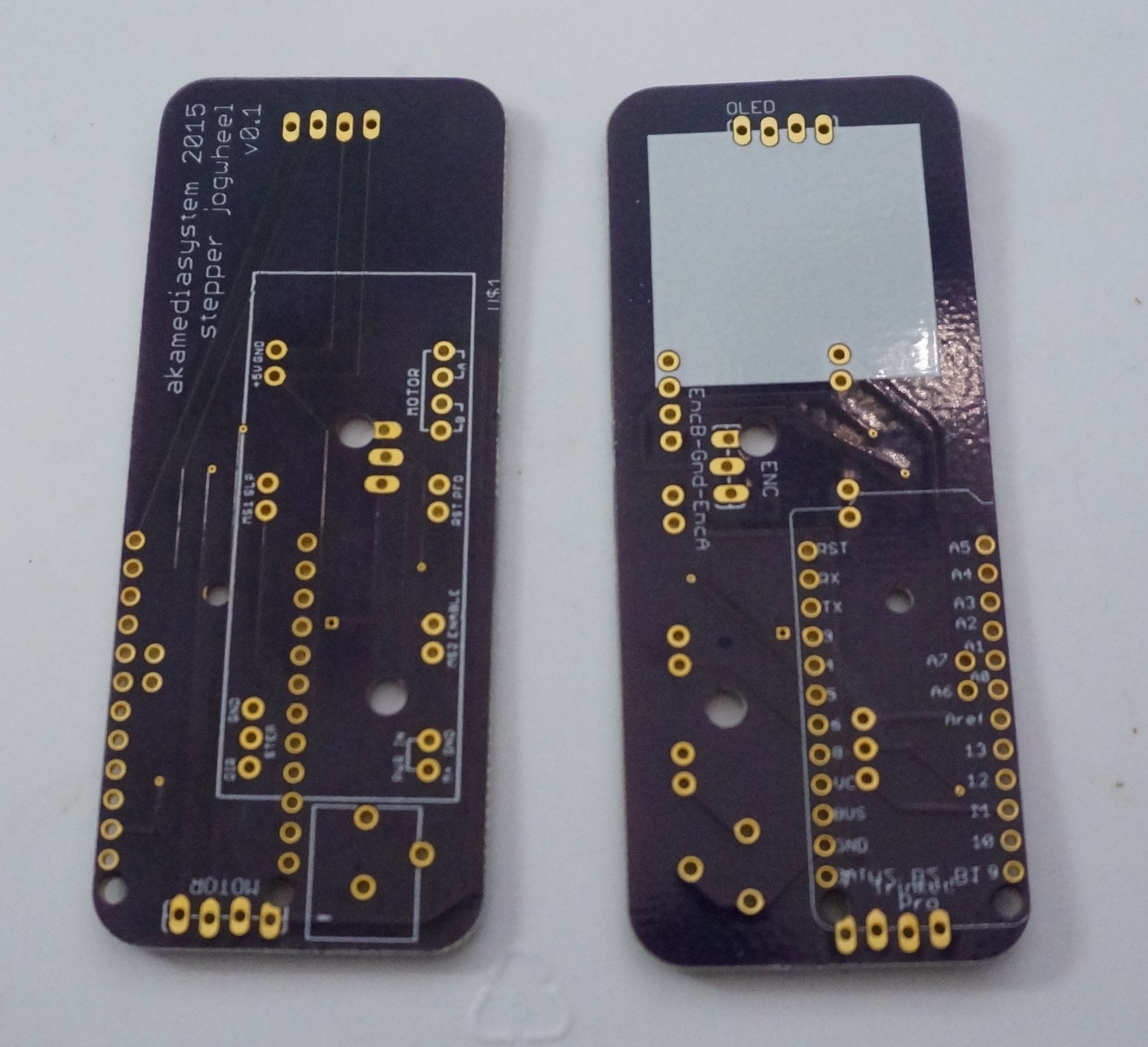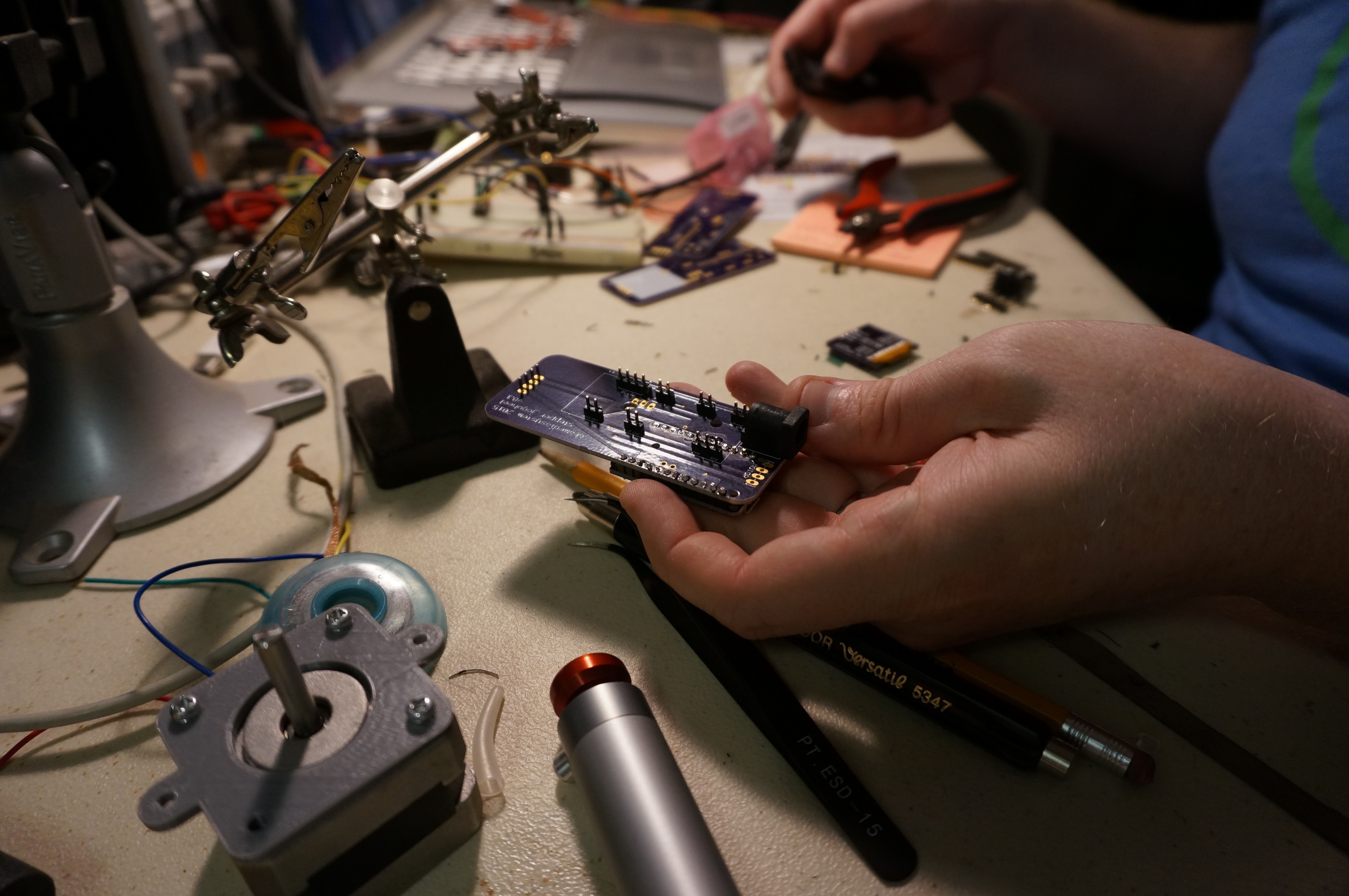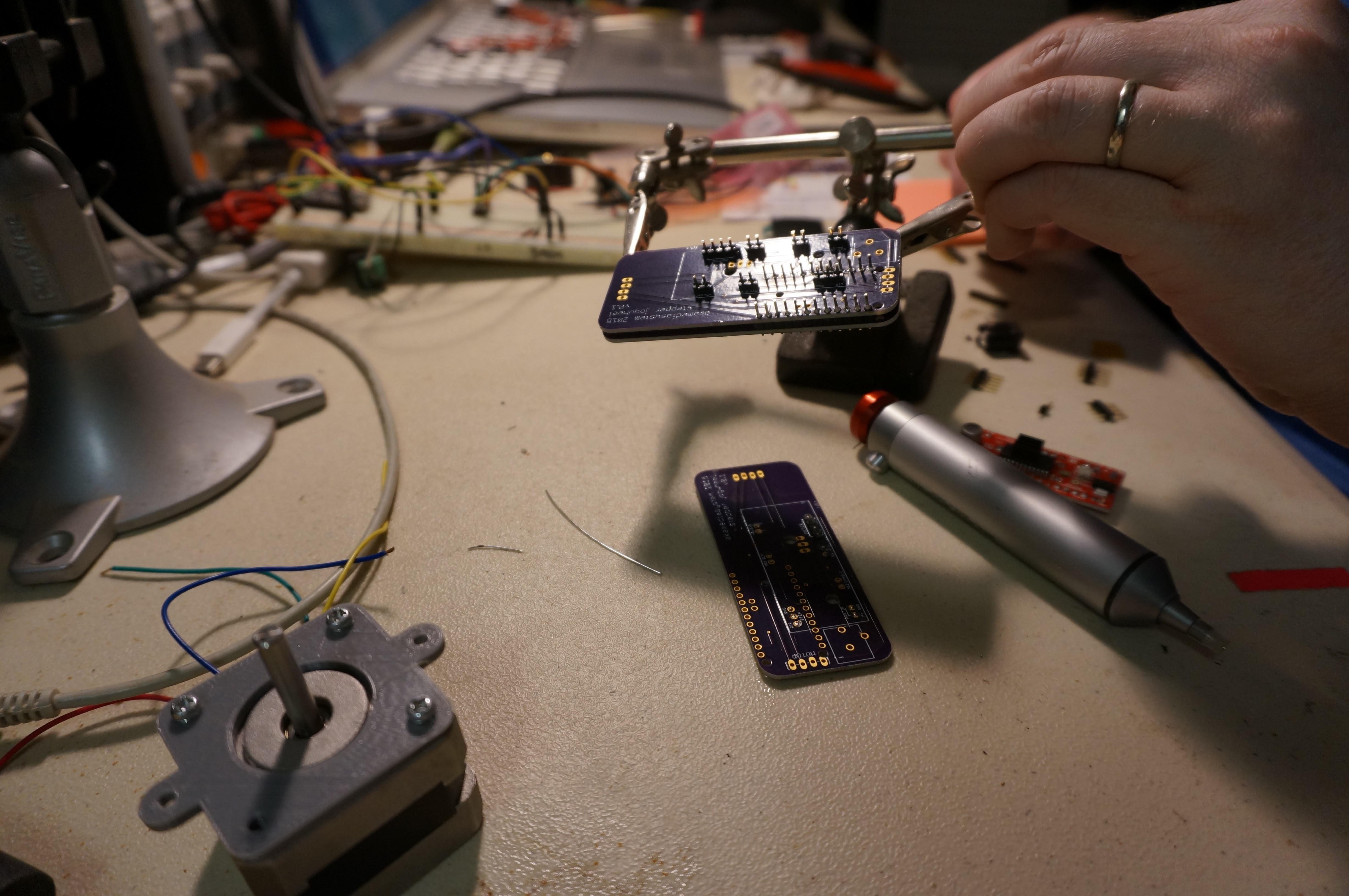Once the headers are all soldered in place, test-fit the daughterboards to make sure you have oriented the headers correctly (ie, the plastic part of the header should be directly under each board, making a spacer of sorts).
Once you are certain of the fit, trim the long ends of each header - the ends that are not sticking out on the side that the daughterboard mounts to. This is important because otherwise nothing will fit. After trimming, you can solder in the boards and the remaining components.
For the encoder, if you are planning on mounting the whole board in an enclosure, you may want to use a short length of silicone wire for each connection, so you can move the encoder to a more ergonomic position on the case.
If you're thrifty and feel you may want to reuse the daughterboards later, they are easy to clip off with flushcutters. To make re-use even easier, you could forego the male headers and use female headers everywhere - this would make the assembly much thicker but would allow you to just pop out any daughterboard as desired.
Here are some final assembly photos:

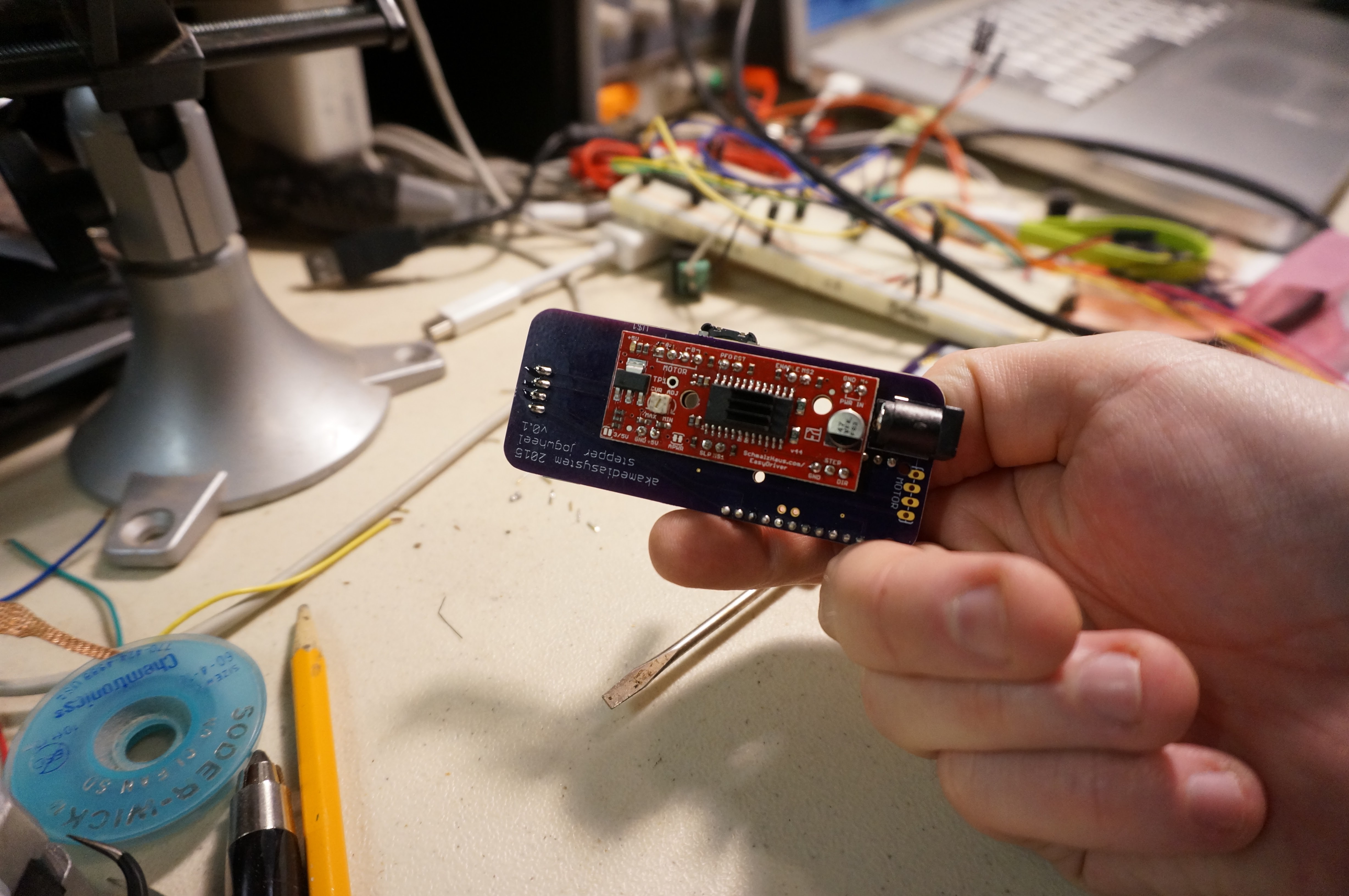
 AKA
AKA